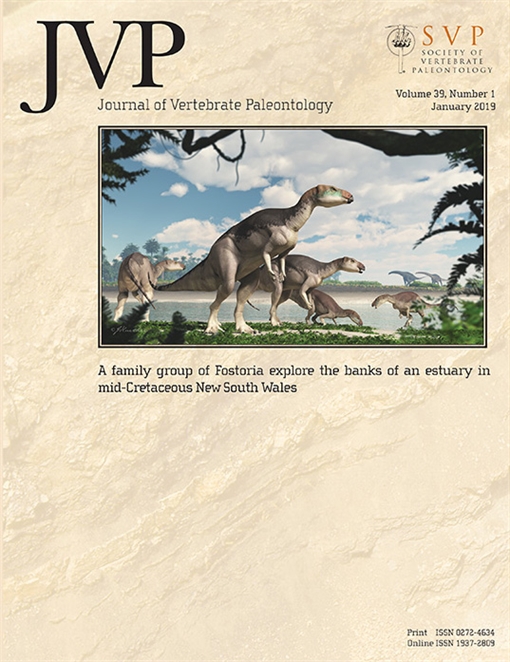A complete skull and well-preserved postcranium of a dvinosaurian temnospondyl from the Carboniferous-Permian boundary of Germany is referred to a new genus and species, Trypanognathus remigiusbergensis. The skull closely resembles that of the early Permian dvinosaurian genus Trimerorhachis in outline and suture topology, but the occiput and the palate differ substantially. Derived states are the penetration of vomerine tusks through the splenial and symphyseal tusks through the premaxilla. Trypanognathus shares with dvinosauroids the lack of a squamosal embayment, an elongated basipterygoid process, a foreshortened palatine ramus exclusively reaching the ectopterygoid, the absence of pterygoid denticles, and enlarged palatal tusks. The body is elongate with well-ossified, but small limbs, the presacral count is ca. 28, and the pleurocentra are large and reached ventrally almost as far as the intercentrum. The new taxon nests within Dvinosauria above the trimerorhachid clade and Erpetosaurus, at the base of the broad-skulled dvinosauroids. Trypanognathus occurs in a tetrapod fauna that closely resembles early Permian assemblages of western North America, with which it shares sphenacodontid and edaphosaurid synapsids, as well as eryopid temnospondyls.
How to translate text using browser tools
22 August 2019
A Dvinosaurian Temnospondyl from the Carboniferous-Permian Boundary of Germany Sheds Light on Dvinosaurian Phylogeny and Distribution
Rainer R. Schoch,
Sebastian Voigt
ACCESS THE FULL ARTICLE





